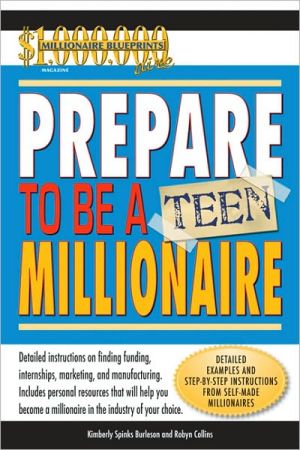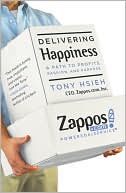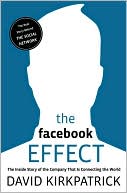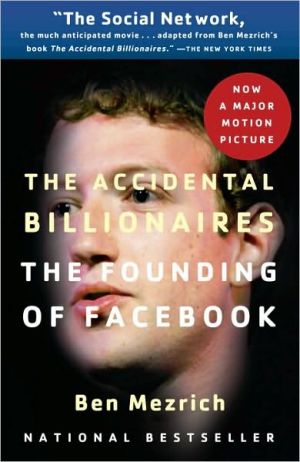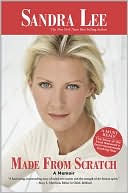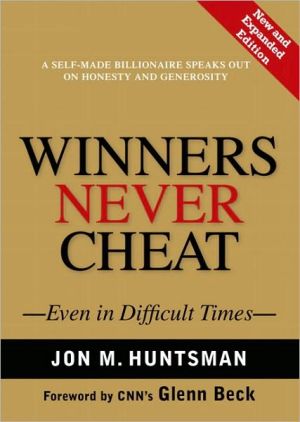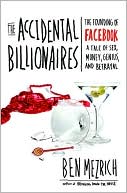Prepare to Be a Teen Millionaire
The hottest teen entrepreneurs reveal what it takes to turn an idea into major money!\ The founders of Millionaire Blueprints magazine, the award-winning Texas-based entrepreneurial magazine, know that teens are savvier than ever and that they possess the ingenuity and technology to take their ideas from conception to million-dollar products. Through their spin-off magazine, Millionaire Blueprints Teen, Tom Spinks, Kimberly Spinks-Burleson, and Lindsay Spinks-Shepherd have been offering teens...
Search in google:
The business bible for today's teen entrepreneur with life-changing advice from teen millionaires who've made the grade!
Ephren Taylor\ BUSINESS NAME(S):\ Ephren Capital Corporation and City Capital Corporation\ BUSINESS TYPE(S):\ Private Asset and Equity Fund Management\ LOCATION:\ New York, NY\ To sit down with Ephren Taylor is to enter the presence of drive, determination, and charisma. Taylor represents an unbelievably rich history of overwhelming success in mind-blowing rapidness of time. Getting into the game at the very 'mature' age of twelve, Taylor was well on his way to the big bucks.\ By age sixteen, he had acquired his first million. Within the next few years, he founded numerous companies. Today, he serves as the youngest black CEO of a publicly-traded company and oversees millions in assets. He keeps his hand in many consulting groups and in various businesses—and he travels the country as a public speaker. He has tremendous heart for raising people up and for building up broken-down communities, because Taylor puts his money where his mouth is.\ A trailblazer from the beginning, Taylor is continuing to find innovative ways to increase community health and personal wealth. Millionaire Blueprints Teen sat down with Taylor recently to get the facts on how he has achieved phenomenal success as one of the premier financial experts of this generation.\ GETTING INTO THE BUSINESS\ \ So, you were making money, when you were twelve years old?\ It started when I asked my mom to buy a new video game for me. You see, we might have had the videogame system, but we would only have two games that came with it like Super Mario and some other Mario game. Anyway, I asked if we could get a new one and she said, 'Why don't you figure out how to make your own game?'\ So, you just made a video game?\ I was in the bookstore, and there was a book by André LaMothe about programming and developing video games called How to Make a Video Game in 21 Days. I got my parents to buy the book for thirty-nine dollars. I didn't realize you needed to have a computer, needed to know how to program a computer, and also have an advanced understanding of math and physics to use the book.\ How did your video game project start making money for you?\ I stayed every day after school to work on the computers. I read that book over and over and over, until it finally began to make sense. I taught myself how to program computers. I made a game called the 'Clone of Pong,' which was boring as all get-out, and an Asteroids knockoff. I decided to make a 3-D game; this was the last chapter in the book. Finally, I had created this video game that was as good as things out there at the time. Somebody saw it and offered me ten dollars for a copy of the game, so I started selling it. I wanted to be the next black Bill Gates. Michael Jordan was making $90 million; Bill Gates was making $90 billion—that's a big difference.\ \ THE INTERNET\ What happened next?\ My work with computers alerted me to the Miracle of the Internet. I knew there was money to be made, so I started a web development company, making $200 a pop for websites. My parents really thought I was selling drugs when I got paid $3,800 for two weeks of work. There was a company out of Florida that was contracting for a company in New York. They did healthcare products for the World's Strongest Man Contest and they needed a vehicle for selling their products. So, I built their website with e-commerce and everything. I applied for the gig with my alias, G-PROG. It just showed my skill sets (for example, C and C++ computer technician certifications, video game development, and more). They never wondered if that person might only be thirteen years old. I read so many programming books, that my skills became expansive.\ How did people find you to hire you?\ They found me because I was on discussion boards and in chat rooms.\ THE LEGAL\ \ What about making it official?\ I called my system Flame Software. I filed as a limited liability company (LLC). You can read books on how to raise capital, file taxes—anything. I was doing legal filings myself, because I didn't know any lawyers. I spent all of this time and effort to build this website for $3,800, but the people who used it got $800,000! I realized I was on the wrong side of the equation. I was just a techie, and I needed to be the owner of the company. I read more books. We couldn't afford Microsoft Office, so I programmed my own software. A company in Georgia started installing it on their computers.\ So, that was in middle school. What happened in high school?\ The coolest thing happened to me in high school. I had written this article asking, 'Why should I work for minimum wage because I'm sixteen years old?' Every teenager thinks they need to get a job, but it's a rip-off for the teens. My buddy was running the school job fair and realized employers were paying a lot of money to market to high school kids. They knew that high shool kids were cheap labor, and that they were a good resource. We decided to create our own online job fair for teens. It would be a place for employers to reach their high school audience, and for high school kids to find out what employment opportunities were out there. We wrote our business plan on the back of our history assignment. Ironically, that history teacher was eventually an employee of ours. We started the 4Teens Network. We wanted to get employers to pay us to advertise their jobs online. At first, we had to give it away because we had no students and no businesses.\ THE MARKETING\ So, how did you turn it into a successful business?\ Well, he was a white Jewish redhead, and I was a black Christian kid. We had started a business even though we hadn't really done anything with it yet. We wrote a press release that told our story, and e-mailed it to the media. That was before there were all these rules about SPAM. We spammed everyone who publicized their e-mail address. As a result, we got it in the newspaper every week for six weeks straight. We had nothing but an idea and a concept, but they thought it was a good story because of our presentation.\ So, did this PR stunt pay off?\ Public relations has helped me do so much stuff. Perception is reality. Because of the media blitz, we had 30,000 students slam into the website. It gave us credibility, and soon we were in business journals—like The Wall Street Journal and The Boston Globe where we got national exposure. Then we got our first check, and it was thirty-five dollars. I realized there was no way we were going to make a million dollars at thirty-five dollars a pop, so I added two zeros to that for future sales.\ What other marketing tactics have you used?\ One time I called Pizza Hut and while I was on hold, I realized I had to listen to advertising. I talked to them and explained what we were trying to do. Because of that conversation, and we were the first ones to ever put ads on the tops of pizza boxes. Also, we changed the name to www.GoFerretGo.com. We liked the play on words. Ferret means to hunt something out. We ended up making $3.5 million and having thirteen employees, including that history teacher.\ THE MONEY\ \ What happened next?\ I was at an entrepreneurship conference and met John Vandewalle,\ a strategic planning business consultant to entrepreneurs. He asked me how much capital we needed to take 4Teens Network/GoFerretGo.com to the next level. My peer and cofounder, Michael Stahl, and I said $8 million. He tore my business plan apart, but I kept at it—making it better and better—until I ultimately became his protégé. I learned that the right introduction is worth so much more than money.\ What happened to make you leave, and what did you do next?\ I wanted to market to the urban core, and there was a difference of opinion. So, I left—and the 4Teens Network folded. After that business, I started doing information technology (IT) consulting. I was outsourcing before it was hot, because you could get people working twenty-four/seven for much less. We built software applications for companies that didn't have an IT department. We would automate things, and implement policies and procedures. Basically, we were the IT department for other companies. I retired at age nineteen.\ You came out of retirement, obviously. Why?\ In 2001, I started buying and selling houses. I would buy them for $10,000, and then sell them for $45,000. It would help the community. My wife's youth minister heard about the difference I was making and called me, because he wanted to invest. He put in $100,000. I had developed an awkward style of investing, but my buddy retired on what his money made for him. I started the Christian Capital Group, LLC, which worked exclusively with churches and ministers. The average ROI for that company was 60 percent a year for some of my clients.\ What is ROI?\ It means return on investment, and, yes, it was 60 percent a year when I first started.\ So, what are you doing now?\ I am now doing private asset management, and we have a private equity fund.\ Tell us about your proven investment system. Has it worked anywhere besides your hometown of Kansas City?\ We tested it in Sacramento. We presented our plan to a group of investors, and we had sold $2 million in houses in eleven hours.\ So, when someone purchases a house from you for rental property, do you help maintain the property?\ We have a credit investment program where the property management is outsourced in each city. With our insurance program, your mortgage is covered for two years if you lose your renters.\ How did you expand into other cities?\ In different ways, but recently we had a flyer at the Black Expo where an investor from Northwestern Mutual Financial Network wanted to set up an investment seminar in Los Angeles. Then, one time, a city council member in Cincinnati heard a testimony in church from a man who had been blessed by the program, and who got in touch with us about working in his city. It really boils down to people hearing about the success that other people are having.\ \ THE SALES\ We know that you launched a twenty-five-city Urban Wealth Tour promoting economic empowerment, affordable housing, and entrepreneurship in urban communities. Why did you do this?\ The tour brings together private investors, educators, nonprofit organizations, religious institutes, and government forces to create positive change in urban communities. Also, I always wanted to get into public speaking.\ How did you break into the speaking realm?\ I contacted Raoul Davis, an expert on individual and corporate branding. I told him my story, and he believed it was interesting enough. One of my first speeches was in front of the Congressional Black Caucus Foundation. I also interviewed with the International Speakers Bureau. They loved me. They broadcast to 600 members. I was booked for a Young Presidents' Organization (YPO) event. The YPO is an international peer network. At the YPO event, I was one of the highest rated speakers ever. We had no book, though, so there wasn't enough media attention. Raoul helped correct this.\ How can someone attend an Urban Wealth Tour, and get in touch with Raoul Davis?\ For information about the Urban Wealth Tour, or about Raoul Davis of Ascendant Strategy Group, go to www.ascendantstrategy.net. . . .\ What kind of money can you make with professional speaking?\ Speaking engagements can be anywhere from $7,500 per performance to $12,000, if you hit The New York Times' bestseller list twice.\ You are constantly looking ahead at new opportunities. What are some things on the horizon?\ Historically, black schools have grant land that can be used to build facilities. We are working on getting biofuel plant construction on campuses approved. We are also working with Native Americans on biofuel. We are also working with Native Americans on biofuel plants. You know how old and beaten up lots of college dorms are. Well, we are in discussions to construct new student housing.\ We know that you are focused on providing affordable homes for working-class families, allowing average families to afford the American dream. How do you do that?\ I want to help communities so they don't have to lean on the government. I do a seminar on alternate revenue streams for ministers, in addition to my real estate project. But City Capital Corporation also manages assets and holdings ranging from large-scale real estate developments bioenergy.\ What companies are you currently involved in?\ They are Ephren Taylor Consulting Group, Christian Capital Group (just for churches), Ephren Capital Corporation, City Capital Corporation, and STG Global Assets. I am part of Greenhouse Springs Water, Big Daddy's Fantasy Sports, and Extreme Energy Drinks. And, I just bought Investorsparadise.com.\ Ephren Taylor's background in start-up firms—from tech to real estate and beyond—is nothing short of miraculous. He has helped start and fund seven companies, raising millions in investment capital. In 2002, his unique investment concepts earned him the distinguished Kansas Entrepreneur of the Year Award. His concepts on empowering local communities with both profitable and socially-conscious investing and development, have made him a frequently requested speaker and panelist for events such as the Wall Street Economic Summit and the Congressional Black Caucus.\ This 'wealth engineer' is recognizable as one of the premier financial experts of this generation. Some have said that his unique outside-the-box approaches squeeze every available dollar of profit out of each project for his investment partners and shareholders.\ In his new book, Success From The Inside Out: Develop the Focus and Strategy to Uncover the Life You Want, Taylor actively seeks to educate others in entrepreneurship and finance and regularly donates time to speak for congregations and charities, sharing concepts such as 'Vision Driven Wealth.'\ THE PLAN TO FOLLOW\ STEP 1\ If you're interested in something, read about how others have achieved success in that field. Then, try it yourself!\ NOTE: Taylor says, 'You have to stay in your core competency.'\ STEP 2\ Do your research. Read all the books you can on the subject. Teach yourself new skills. Be a trailblazer.\ STEP 3\ Go to industry seminars and events.\ NOTE: Taylor advises you to find a mentor, and allow that person to help you forge your own path to success. He says, 'Become their protégé. The right introduction is worth so much more than money.'\ STEP 4\ Write press releases, and get your company's name in the media.\ NOTE: Taylor says that getting your company profiled in business journals leads to profits by raising your credibility.\ . . .\ \ CERTIFICATION FOR MINORITY BUSINESSES\ Is Your Woman- or Minority-Owned Business Certified? Should it be?\ Is your business at least 51 percent owned and operated by females or minorities? If so, you may be eligible for certification from third-party designators that will open doors to future profits.\ Ownership matters in today's business environment, and women and minorities can, and should, obtain business certification—recognition and approval—when bidding for government or private sector business. What's certified today can pay off handsomely tomorrow.\ Certification is granted by local and state governments and organizations. What generally is required is at least 51 percent ownership and operation by a woman or women. No figureheads are allowed. If this sounds like your business, you'll need to provide exact supporting documentation—a sworn affidavit is required, as well as a history of your business, including finances, management, personnel, legal structure, and more.\ Certification can enhance your firm's ability to do business in public markets and with corporations that maintain diversity (for example, women or minority) purchasing programs. Although certification doesn't guarantee you'll get the business, it won't hurt. Think of it as one of your marketing tools that enables you to get your foot in the door. To accurately identify minority- and women-owned firms and operate with fairness in terms of their procurement practices, corporate buyers and government procurement managers often look for this official designation.\ The certification process is not just 'sign on the dotted line.' Paperwork abounds—although it is made easier by the Internet—and you may feel somewhat overwhelmed. But the benefits can be well worth your time and money.\ To get started, identify your customer base and then determine which certifications, if any, your customers require. Ask them, because there's no 'one-certification-size-fits-all.' Definitely certify if you're targeting large businesses (for example, corporations that subcontract or assign jobs to outside vendors) or the government. The federal government purchases more than $200 billion from the private sector annually and is obliged to award contracts to small, disadvantaged, and woman-owned firms. State and local agencies have a quota to meet too.\ Should you do it yourself, or hire someone else to do it for you ?\ Go online (use a search engine like Google), and you'll uncover a number of firms that will handle the certification process for you for a fee. Does it spare you from drowning in red tape? Possibly, but paying someone may not be in your best interest, according to Steven Sims, vice president for programs and field operations of the National Minority Supplier Development Council, Inc. (NMSDC). You are your best representative—the heart and soul of your business. 'During our process, we want to really connect with owners. We want a real sense that someone is behind the business—that it's not a front company,' Sims explains. 'People can use lawyers, but when it's time to present yourself, we figure that if you have difficulty doing that, you may not really be the person managing, owning, or operating your business. In fact, you do have to be fairly aggressive when trying to obtain contracts.\ 'Of course, we know that some people are so busy trying to get their company together—they're not fronting for anyone—and they may require some help,' he adds. 'But when it's time for the 'rubber to hit the road,' we do expect to see appropriate individuals step forward and represent themselves.'\ CERTIFICATION FOR WOMEN\ According to the Center for Women's Business Research (www.womensbusinessresearch.org), and based on data provided by the U.S. Bureau of the Census as of 2006, there are an estimated 10.4 million privately-held firms in the United States that are at least 50 percent owned by a woman or by women. These firms employ more than 12.8 million people nationwide and generate $1.9 trillion in annual sales.\ The Women's Business Enterprise National Council (WBENC) [www.wbenc.org] is generally recognized as the nation's leading third-party certifier, accepted by more than 700 major corporations nationally, as well as by federal and government agencies. WBENC certification can expand your company's visibility. Its special programs and initiatives provide certified woman business enterprises (WBEs) with information, training, and resources for growing their businesses. Members can access databases and participate in networking activities to learn from others what certification can mean for success.\ WBENC's website is clear, concise, and guides you step-by-step through the initially daunting process of certification. WBENC has fourteen partner organizations nationally that handle WBE certification in all fifty states, allowing you to work with the nearest geographical office. Fees vary slightly among regional affiliates. There is a nonrefundable processing fee that ranges from $250 to $500 annually, so request cost information before you begin. Expect to wait two to three months for certification to be completed.\ Along the way, you'll no doubt wonder why you're going to all this trouble. Because certification is worth a lot to its members, WBENC is careful to filter out businesses that are not woman-owned.\ 'I can fully understand what someone goes through as we're asking them to bare their business souls,' says Blanca Robinson, WBENC's senior director of field operations. (Since this interview, Robinson has been promoted to executive director of the Women's Business Council, Gulf Coast.)\ 'Applicants are required to submit a lot of information that they hold dear and personal—and confidential. It's a stringent process, but we're very concerned with maintaining the integrity of certification. We can make no exceptions—everyone must provide certain documentation,' she explains.\ Robinson says that the WBENC will 'look at the history of a business, how a woman came to own it, what her background is, and what she has brought to the business in terms of assets or financial contributions. Is she incorporated? What are her articles of incorporation and bylaws? Everything is used collectively, as a puzzle piece, to make sure the woman is not just the owner on paper, but that she is actually managing, controlling, and dictating the direction the company is headed,' Robinson explains.\ Sometimes, certification is denied. She cited a recent example. Two young women started a business and held 51 percent ownership, while a law firm held a 49-percent minority interest. But their agreement stipulated that, in order for the firm to provide funding and financial backing, everything had to be run through the corporation for approval.\ 'In this particular case, the women were very much in control, but they did not meet 'independent' criteria; they were too restricted. When they reapplied, they had bought out another company and were ultimately successful,' Robinson says.\ Help may also be available from the National Women Business Owners Corporation (NWBOC) [www.nwboc.org]. Its certification is an alternative to the multiple state and local certifications required by many public and private sector agencies. Numerous private and public agencies accept NWBOC certification.\ You can self-certify your woman-owned business at the U.S. Small Business Administration's (SBA) [www.sba.gov] Central Contractor Registration (CCR), the primary vendor database for the U.S. federal government (www.ccr.gov). Again, you'll follow the clearly delineated steps online. This is basically an honor system versus the more rigorous by-design programs noted above.\ Many agencies or companies may require state or local certification too. Again, ask the companies or agencies with which you want to do business, and they'll direct you to the source you need.\ CERTIFICATION FOR MINORITIES\ Start with the NMSDC (www.nmsdc.org), which was established to provide increased procurement and business opportunities for minority businesses of all sizes. Its structure is similar to both the main woman-owned business certifiers.\ With a national office and thirty-nine regional councils, NMSDC has 3,500 corporate members, including most of America's largest publicly-owned, privately-owned, and foreign-owned companies, as well as universities, hospitals, and other buying institutions. The regional councils certify and match more than 15,000 minority-owned businesses (Asian, Black, Hispanic, and Native American) with member corporations seeking to purchase goods and services. As with woman-owned certification, ownership and operation by minority individuals must be at least 51 percent.\ According to NMSDC, in 2005, member corporations' purchases from minority businesses exceeded $94.6 billion. Based on surveys compiled in 2002 by the SBA's Office of Advocacy, minorities owned approximately 18 percent of the 23 million U.S. firms.\ A combination of screenings, interviews, and site visits establish eligibility—all under the supervision of a regional council. There is paperwork for this certification, but there is assistance along the way. Online certification is on tap for the near future. Joining puts you into the supplier database, encourages referrals to buyers, and offers access to ongoing education, networking, trade fair participation, and financing programs.\ 'The process can only be so simple,' Sims says. 'It must be rigorous to counteract the efforts of those who do not really own minority businesses, but want contracts that reduce opportunities for real minority businesses. Unfortunately some have been very active in developing and promoting front companies and other entities that don't really serve minority business owners.\ 'Because we offer so many valuable services, the argument exists that, yes, owners should certify,' he adds. 'But some folks simply say, 'It's not going to help me.' Then some owners get certified and never participate. Remember: being certified doesn't mean that someone will walk up to you and offer two contracts that make you a multimillionaire—it just doesn't happen that way.' Sims is optimistic about the future, and adds, 'There seems to be real willingness and renewed interest.'\ WOMEN'S BUSINESS BY THE NUMBERS\ According to the Center for Women's Business Research (based on data provided by the U.S. Department of Commerce, Census Bureau), the following data reflects statistics as of 2006:\ • Estimated 10.4 million privately-held firms in the U.S. that are at least 50 percent owned by a woman or women\ • Women's businesses employ more than 12.8 million people nationwide and generate $1.9 trillion in annual sales\ • Fifty-one percent of all privately-held firms are at least 50 percent owned by a woman or women, and account for 29.7 percent of all businesses in the U.S.\ • Largest share of firms are in the service sector with 5.3 million in services, 1.1 million in retail trade, and less than 1 million in real estate, rental, and leasing\ • Greatest industry growth from 1997 to 2006 was in wholesale trade, followed by health care and social assistance services; arts, entertainment, and recreation services; and professional, scientific, and technical services\ • Three percent of all women-owned firms have revenues of $1 million or more compared with 6 percent of firms owned by men.\ SPECIAL FUNDING OPPORTUNITIES FOR WOMEN AND MINORITY BUSINESS OWNERS\ Did you know that if you are a woman, a minority, a veteran, a rural small business owner, or a small business owner of certain specialized industries, you can be prequalified for a loan of up to $2 million by the SBA? It's called a 7(a) loan guaranty, and the SBA even has people to assist you (ask about possible pilot programs for women and minority prequalification loan programs) in filling out your program application. These professionals can help you learn how to present your information in ways that make it much more likely that you will get the loan you need for your business.\ Once your application package is complete, you can submit it to the SBA for consideration, and you will generally know within a few days if you're approved. Then, the SBA will issue a letter of prequalification that says the SBA will guarantee up to 75 percent of your loan. This means that if your business receives the maximum loan amount of $2 million under the 7(a) Loan Program, the maximum guaranty to the lender will be $1.5 million (or 75 percent). For more information about these special prequalification programs for women and minorities, go to the Small Business Center's website at www.dsmallbusinessloans.com, but keep in mind that this is information independent of the SBA. Use it as a research tool only.\ A leading SBA lending source is the CIT Small Business Lending Corporation, which provides financing packages from $150,000 to $10 million to a variety of small businesses. To check out their resources for women seeking a business loan, go to www.loanstowomen.com.\ There are also billions of dollars earmarked by the government each year for federal grants to minority-owned businesses that go unused because no one applies for them. All it takes, according to Government-Grants-Loans (www.government-grants-loans.com), is a willingness to apply for these funds at the national level—and keep applying. Multiple applications are encouraged. This website also suggests that often times no one applies for them because they don't know how, or where, to go to find the information they need to apply. In addition to the site listed above, the SBA can help you gather your information for creating a winning grant application. An Internet search of 'federal grants for minority-owned businesses' will turn up a long list of grants that may be just waiting for your application. In addition, most states and large cities have funding information centers that offer programs, workshops, and classes on applying for grants. There may be a nominal charge for these, but most programs affiliated with funding information centers are free. These funding information centers are great resources to find the money your business needs to grow. Many, if not most, of these funding information centers also offer access to the Foundation Center's (www.foundationcenter.org) national database of grants (called FC Search) through which you can search for grants that fit your business and mission. Funding information centers also usually offer many printed grant resources. To find a funding information center near you (many located in libraries), search the Foundation Center's network of cooperating collections' (publications and supplementary materials) locations at www.foundationcenter.org/collections/.\ And for female entrepreneurs, there are reportedly even more sources for grants, loans, venture capital, and other kinds of financial help designed just for women-owned businesses (private foundations, and federal, state, and local programs). According to Government-Grants-Loans' independent research, 500,000 women—two out of every three new ventures—start their own businesses each year. They also state that women are reported to have a 75 percent greater chance of succeeding in business ownership than men.\ Overall, the U.S. Department of Commerce, Census Bureau (www.census.gov), reported in a 2001 press release that the number of minority-owned businesses has grown more than four times as fast as other U.S. firms since 1992, increasing from 2.1 million to 2.8 million firms. Federal grant money for these groups can pay your expenses for start-up, expansion—and even for legal advice or continuing education.\ If you are a woman or a minority starting or running a small business, and you could use a little financial help to get your business to the next level, it may pay to check out the funding resources that may be available to you at federal, state, and even local levels. To get started, visit the SBA office in your area, or visit them online at www.sba.gov.\ . . .\ Is Branding BS?\ By Raoul Davis\ It is one of corporate America's major clichés. Neal Lemlein, a premier entertainment executive and marketing consultant for the last twenty years, even asked the question as a professor at the University of Southern California. 'Is Branding BS?' he asked. Well, Mr. Lemlein, when it's a word symbolically thrown around as jargon and it doesn't come with a strategy, the answer is indeed, 'Yes.' However, it can be the cornerstone of a comprehensive strategy.\ So, what is branding? Think of it through the lens of brand enhancement—identifying and analyzing brands for undiscovered or underdeveloped opportunities that will translate into consistent messaging, increased image, and profitability. Brand enhancement assumes all individuals have a personal brand and that corporations have a corporate brand, whether they have identified it or whether it is undiscovered. Another way to think about branding is to consider what you are best known for.\ Speakers, for instance, need to spend serious time thinking about developing their brand before they begin marketing, developing their speaking topics, editing professional videos, and developing a personal style and their overall image in the industry. Too many speakers are motivated purely to make a profit. Or, they are passionate about speaking but lack focus. Creating a brand strategy helps generate that focus—it allows others to see a consistent message and get a grasp on who the speaker is and what they offer.\ So, how does an individual come up with a personal brand? How does a corporation come up with a corporate brand? It is done by creating a brand portfolio that identifies different areas for branding with corresponding imaging and marketing strategies, public relations implementation packaging, a product funnel, and a revenue portfolio.\ For example, let's take Toyota. It has an overarching brand. Additionally, Toyota has Corolla, Camry, and RAV4, among others—all with separate brands and related strategies. Toyota is also the owner of Lexus, though you would almost never know. Toyota, wanting to reach into a higher-end clientele, must have realized that its brand was associated with affordable cars. Entering a vertical market where retail prices are $40,000 and up, required the generation of a prestigious brand. Think about the market relevance here of what Toyota has done throughout the years. Whether you are a college student looking to purchase a cost-effective, high-gas-mileage first car, or you're a multimillionaire looking to purchase a third car that screams prestige!, purchasing a member of the Toyota family is a practical option. Toyota utilizes very different strategies to brand its vehicles. Additionally, the cars often feature very different options and accessories. A Corolla purchaser may see cruise-control as a nice option, while a Lexus purchaser would consider it mandatory.\ Okay, that's cars. Now, let's talk about a striking example of a successful personal brand. One of the best brand builders throughout the 200+ years of the speaker industry is that of the recently deceased Dottie Walters. Her 'Speak and Grow Rich' brand is brilliant. The very name creates a crystal clear image. Walters' brand promises to teach you to speak and grow rich. Additionally, Walters had the seminar series of the same name while she travelled across the country, and she always carried herself with conviction and credibility. Walters' approach was to have a stand-alone name, 'Speak and Grow Rich,' which draws excitement by itself. Her branding has simultaneously been able to create an experience memorable enough to draw lifetime consumers who not only attend seminars and purchase books, but who also invest in her product funnel and become top targets for major symposiums and additional product offerings.\ So, you have an approach and it's not working. Or you're attempting to create your initial brand. Think about some of the most powerful brands in the marketplace for the past twenty years. Consider Nike's 'Just Do It' brand. When you hear this, it makes you just want to do it. This brand speaks especially well to the athletic demographic.\ Snickers promises to 'Satisfy Your Hunger,' and when you're in the candy section after a workout, in between meals, or at the gas station on a long road trip, those words come to your mind consciously and subconsciously. You believe Snickers has an answer for your hunger.\ So, is that what branding is about—simply coming up with a hot phrase? Absolutely not. Let's look at Starbucks. The coffee chain doesn't rely on a phrase, but rather on an experience. When you think about Starbucks, it is about more than the coffee. It is a place to meet friends, a place to study, or a place to just relax. Starbucks has been the sight for many meetings, dates, and breaks from the hectic pace of the day. This is what effective brands do: they create experiences.\ I am chief executive officer (CEO) of Ascendant Strategy Group (ASG), Inc., and I want to help you get to the truth about branding. ASG is all about individual and corporate brand development. For one of our clients, Jeff Johnson, a public speaker and social activist, we created two brands: 'Social Architect' and 'Bridge Builder.' The 'Social Architect' brand speaks to Johnson's ambition to create stable institutions that help people. Additionally, it captures the spirit of his keynote addresses. Johnson doesn't simply speak on issues. He provides tangible solutions. He creates an environment where creative energies flow, and one where the crowd is challenged to make its own solutions.\ The 'Bridge Builder' brand encompasses his ability to work with people of very different backgrounds. In his speeches, Johnson talks about the importance of people with different views working together. So, his brand speaks to his background and the experience that is created by his speeches. When you have this sort of synergy, it begins to make you a highly desirable and memorable speaker.\ To create your brand, think about the things you are best at and what people compliment you on most. Create a simple message that will stick well. Then, think about the products that can be generated, including a website, books, CDs, and more. Make sure the phrasing generates an emotional image. Unless you are already an extremely successful speaker, the phrasing is critical. If you don't feel like walking through this process yourself, consider hiring one of the many industry consultants.\ Consider hiring ASG www.ascendantstrategy.net We are a brand enhancement firm for individuals and corporations. With highly-specialized strategies, ASG creates, enhances, and promotes innovative solutions to emphasize the unique values, images, and messages of individuals and corporations. ASG produces profitable brand portfolios.\ We place a full team around you; we are an ideas firm in the truest sense and specialize in personal branding. Our service has a strong track record for doubling, and tripling, performance within a twelve-month period. ASG has helped corporations improve their stock performance more than 700 percent and stands ready to help CEOs and public speakers ascend to greatness.\ ©2008. Kimberly Spinks Burleson and Robyn Collins. All rights reserved. Reprinted from Prepare to Be a Teen Millionaire. No part of this publication may be reproduced, stored in a retrieval system or transmitted in any form or by any means, without the written permission of the publisher. Publisher: Health Communications, Inc., 3201 SW 15th Street, Deerfield Beach, FL 33442
A Note from the Authors viiIntroduction ixEphren Taylor 1Signing with Barnes & Noble 13Certification for Minority Businesses 14Is Branding BS? 26Ryan Allis 31Pay-Per-Click (PPC) Advertising 54So, You Want to Write an E-Book? 55The Fifteen-Step Process to Raising Venture Capital 58Michael Simmons and Sheena Lindahl 71Promoting a Self-Published Book 87Money For College 100How to Write a Blog 104Ben Cathers 109Business Structures Primer 124Setting Up Your Business Structure 128How to Incorporate 132How to Build Your Own Website 139Taxes for Teens 155Jasmine Lawrence 159How to Sell on eBay 169Make Friends with PayPal 172How to Get Your Product in Wal-Mart 174The Difference Between a Copyright, a Trademark, and a Patent 175The Facts About Franchising 177The Letter of the Law: Uniform Franchise Offering Circular (UFOC) 179Chris Faulkner 181How to Write a Press Release 206How to Get an Internship 209
